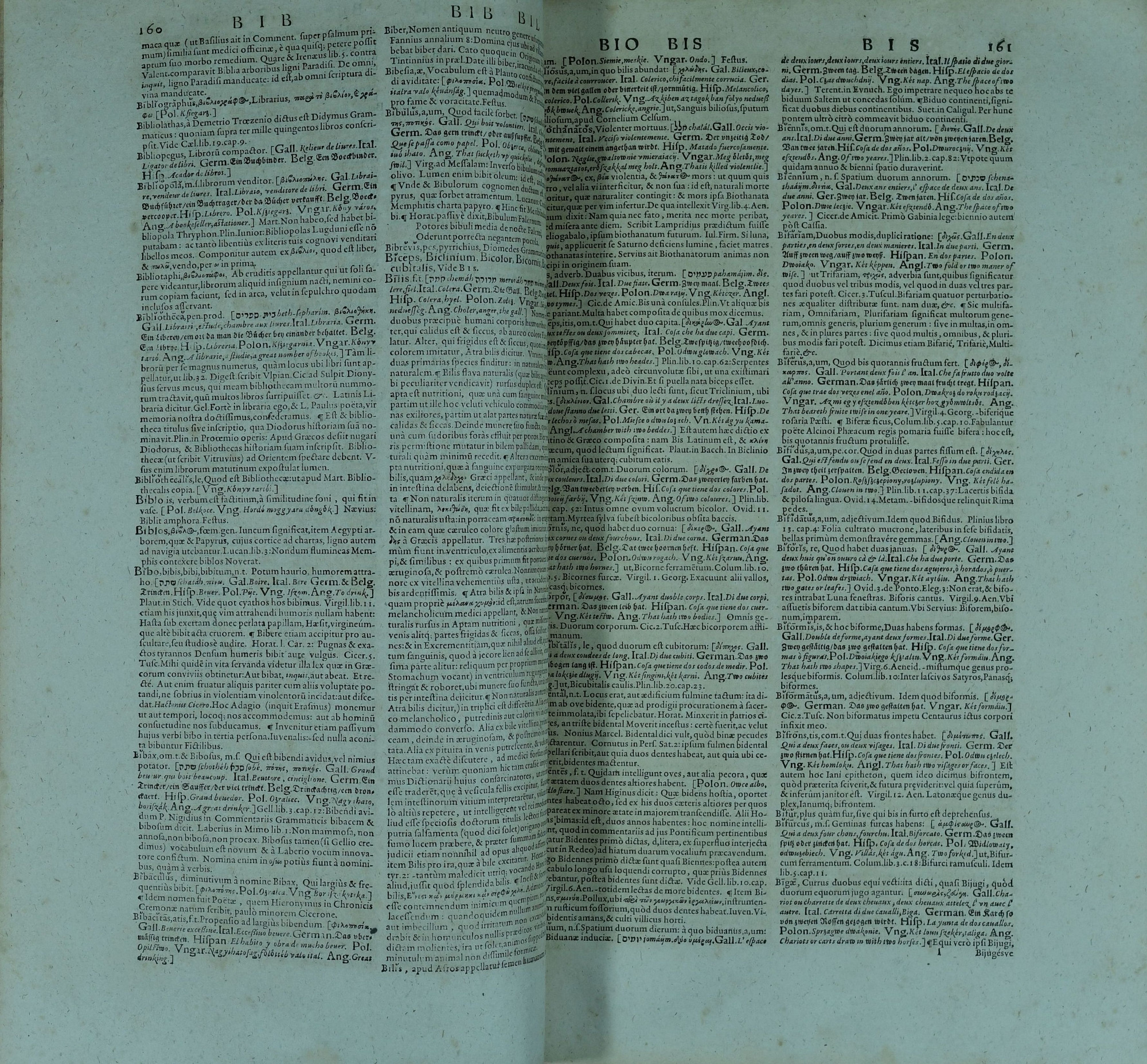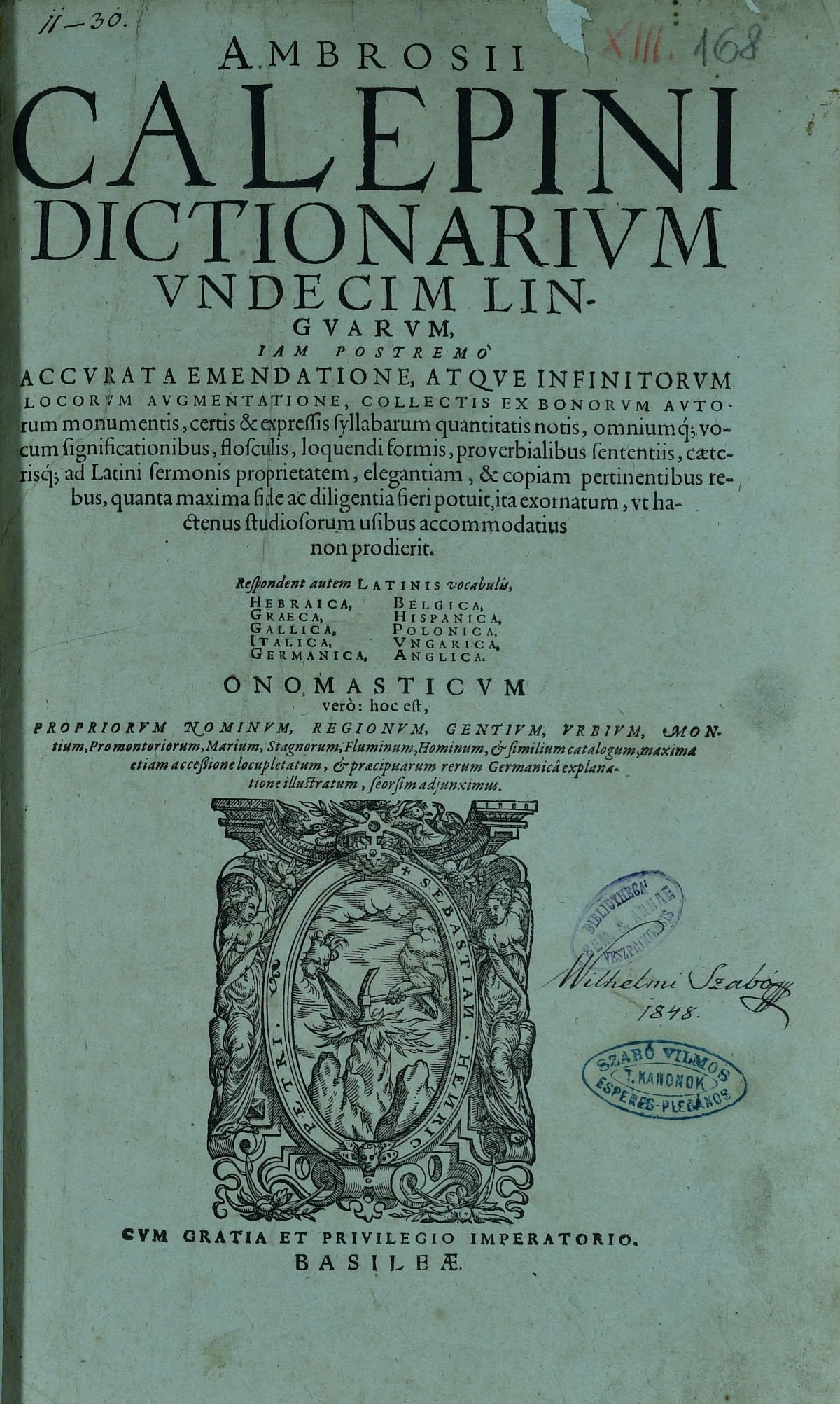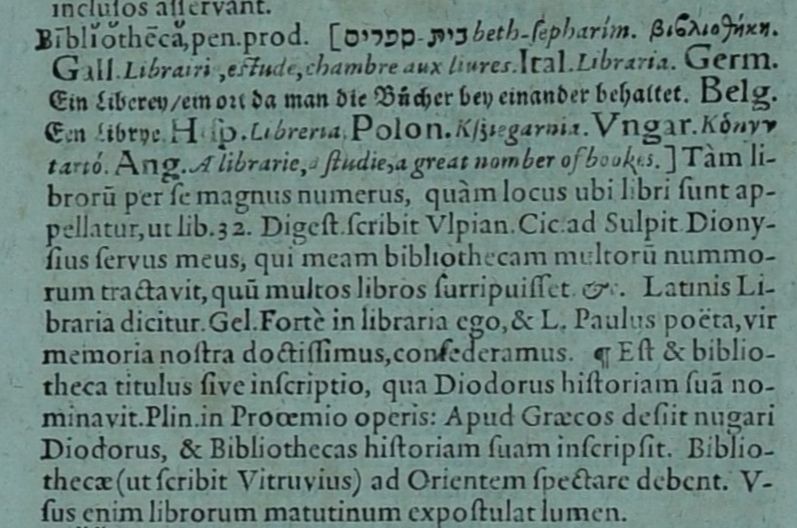One of the rarities of the Veszprém Archiepiscopal Library is the eleven-language dictionary published by Calepinus Ambrosius in 1605. The book contains explanations in Latin, Hebrew, Greek, French, Italian, German, Belgian, Spanish, Polish and English; it is an invaluable resource for the Hungarian language and cultural history. The author, Amborgio Calepino was born in the Italian Calepio in 1435, the well-known author joined the Augustinians in 1458. His main work, the Latin explanatory dictionary “Cornucopia” was published in Reggio in 1502. The work is a dictionary of the Latin language providing the origin and the meaning of the words and other grammatical, historical information. The comprehensive and extensive Latin language lexicon was extremely popular, it was published a number of times as early as in the 16th century and it kept its popularity until the 18th century, it was last published in France in 1778. The meanings of the Latin words were extended first with 7, 8, 10 and later with 11-language explanations. Hungarian language was included in the last extension along with the Polish and English languages, and then it was called Dictionarium.
Hungarian synonyms firs appear in the so called Lyon edition in 1585. The Hungarian words of the book show features of Transylvanian dialect, morphology and phonetics, furthermore Catholic characteristics, so it was certainly compiled by one or more Jesuit monks living in the Transylvanian principality. A typical Transylvanian feature is the o/a change in different positions (first syllable, within the word and in final position): kaponya, balha, szaparít, asszany, as well as the elongation of the vowel in the first syllable: kókas, kúpa, bót, hély. The different forms of identical words within the book shows that it was a work of multiple authors.
The work is a primary source of Hungarian linguistics, including more than ten thousand Hungarian expression from the late 16th century. Many words of our vocabulary first appeared in printed form in this book. The contents of the volumes have been analyzed by a multitude of linguists in the last four centuries, the entries were topics of theses and dissertations.



